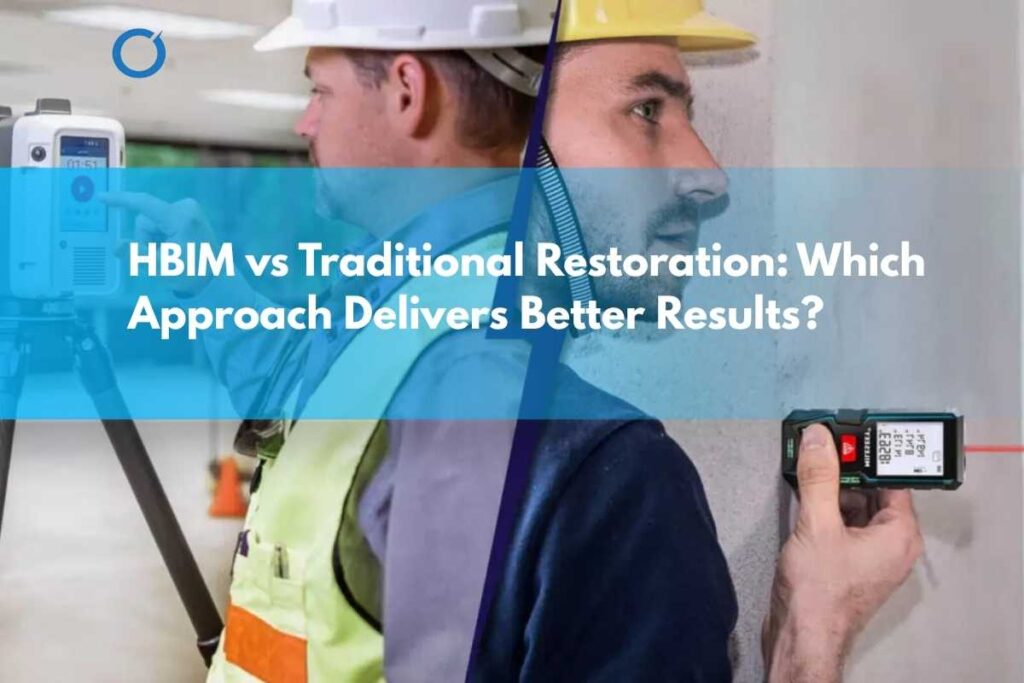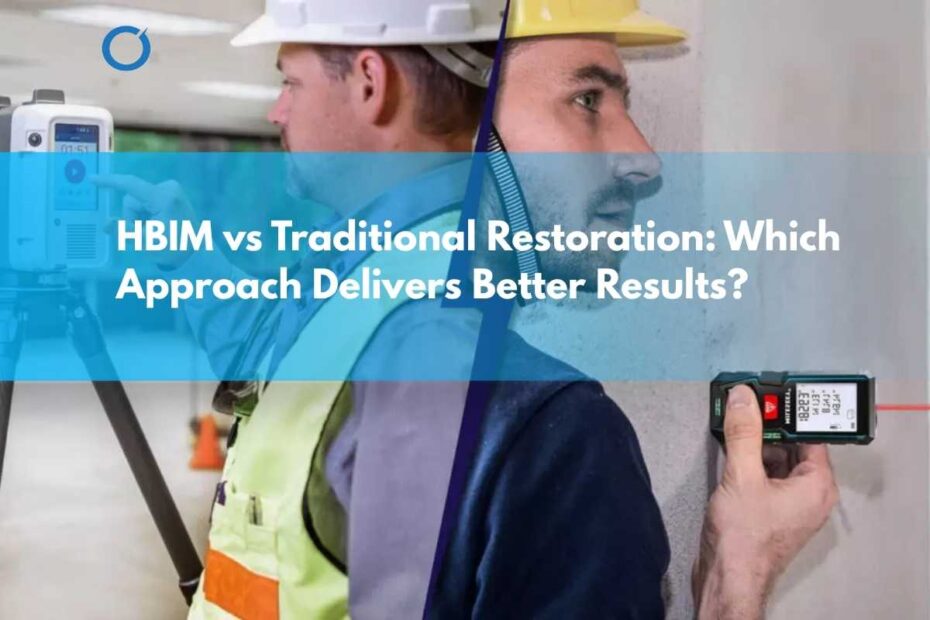
In 2025, HBIM vs Traditional Restoration is a critical debate for heritage building projects in the UK, as stakeholders seek efficient and accurate methods to preserve historic structures. Renovating listed buildings demands balancing historical integrity with modern functionality, often posing significant challenges. This blog compares Historic Building Information Modeling (HBIM) with traditional restoration methods, highlighting their strengths, limitations, and which approach delivers superior results for heritage building restoration in the UK.
Understanding HBIM and Traditional Restoration
HBIM in restoration leverages advanced digital tools to create detailed 3D models, integrating data for precise planning and execution. Traditional restoration, by contrast, relies on manual surveys, 2D drawings, and conventional craftsmanship. Below, we explore how these methods compare in delivering successful outcomes for BIM for historic buildings.
What is HBIM?
Historic Building Information Modeling uses technologies like Scan to BIM Modeling Services UK to create digital twins of heritage structures. These models capture intricate details, enabling precise documentation and analysis. HBIM supports collaborative workflows, ensuring compliance with UK heritage regulations.
What is Traditional Restoration?
Traditional building restoration involves manual techniques, such as hand-drawn surveys and physical inspections, to preserve historical buildings. While effective for small-scale projects, it often lacks the precision and scalability of modern methods. This approach relies heavily on skilled artisans and historical records.
Key Differences: HBIM vs Traditional Restoration
1. Accuracy and Documentation
HBIM in restoration offers unmatched accuracy through technologies like laser scanning and photogrammetry, provided by Scan to BIM Modeling Services UK. These tools create detailed 3D models, reducing errors in documentation. Traditional methods, however, depend on manual measurements, which are prone to inaccuracies.
- HBIM ensures precise digital twins for planning.
- Traditional methods risk errors in complex structures.
- Our 3D BIM Modeling Services UK enhance documentation accuracy.
2. Preservation of Historical Integrity
Heritage BIM vs traditional methods excels in preserving historical authenticity. HBIM models, created via CAD to BIM Conversion Services UK, ensure renovations respect original designs while integrating modern systems. Traditional restoration, while respectful of craftsmanship, may struggle with integrating contemporary requirements without compromising heritage features.
- HBIM aligns renovations with historical records.
- Traditional methods may overlook subtle architectural details.
- We provide Architectural BIM Modeling Services UK for precise preservation.
3. Efficiency and Project Management
Restoration methods for listed buildings benefit from HBIM’s advanced project management capabilities. 4D and 5D BIM Services UK integrate time and cost data, streamlining scheduling and budgeting. Traditional restoration often faces delays due to manual coordination and limited data integration.
- HBIM’s 4D BIM visualizes construction phases.
- 5D BIM ensures accurate cost forecasting.
- Our BIM Outsourcing Services UK optimize project workflows.
4. Clash Detection and Risk Mitigation
BIM for historic buildings includes BIM Clash Detection Services UK, identifying conflicts between new and existing elements before construction begins. This minimizes costly rework and protects heritage features. Traditional restoration lacks such predictive tools, increasing the risk of structural issues.
- HBIM detects clashes in MEP and structural systems.
- Traditional methods rely on post-construction fixes.
- We offer MEP BIM Modeling Services UK for seamless integration.
5. Scalability and Collaboration
Heritage BIM vs traditional methods supports large-scale projects through collaborative digital platforms. HBIM enables global teams to work on a single model, as seen in BIM Outsourcing Services UK from the UK to India. Traditional restoration struggles with scalability, relying on localized expertise and manual communication.
- HBIM fosters real-time collaboration across teams.
- Traditional methods limit scalability due to manual processes.
- Our Structural BIM Modeling Services UK ensure robust coordination.
HBIM Case Studies in Restoration: UK Examples
In 2025, HBIM case studies in restoration highlight its superiority. For instance, a Grade I listed building in Bath used HBIM to integrate modern HVAC systems while preserving 18th-century facades. By leveraging Scan to BIM Modeling Services UK, the project reduced errors by 25% and completed 10% under budget. Similarly, our BIM Outsourcing Services UK supported a York restoration project, enabling seamless collaboration between UK architects and Indian modelers.
Modern vs Traditional Heritage Restoration Techniques: Which Wins?
Modern vs traditional heritage restoration techniques reveal HBIM’s clear advantages in accuracy, efficiency, and scalability. While traditional methods hold value for small, craftsmanship-focused projects, they fall short in complex renovations requiring modern compliance. HBIM’s data-driven approach ensures heritage building restoration meets 2025 UK standards without compromising historical value.
Conclusion: Choose HBIM for Superior Restoration Results
In the HBIM vs Traditional Restoration debate, HBIM emerges as the superior choice for listed building renovations in 2025. Its precision, efficiency, and ability to preserve historical integrity make it ideal for complex heritage projects.
Contact us today to leverage our Architectural BIM Modeling Services UK, BIM Clash Detection Services UK, and more for your next restoration project.
